Choosing the Best Mig Welder
Affiliate Disclaimer: migweldercart.com provides industry expertise and research to its readers. You help us by using the links to our carefully picked items, which may earn us a little commission.
MIG welders, or metal-inert gas welders, are the most used welding equipment. They are simple to use and more cost-effective than other types of welding when applied to fabrication and complex projects.
The barrier to entry for MIG welding is low, making it appealing to commercial and hobbyist welders. In addition, when your skill level increases, you’ll be able to upgrade to more costly MIG welders.

For further information, please see our definition of MIG welding.
Metal-Inert Gas welding, often known as gas metal arc welding (GMAW) or wire welding, is referred to by the abbreviation MIG.
A solid wire electrode is passed through the welding gun and into the welding pool to create an arc that melts the metals together. Because it does not need high-priced equipment or substantial training, stick welding is one of the more accessible types. MIG welders are versatile enough to be used by both experts and do-it-yourselfers.
This comprehensive guide to the top 10 MIG welders includes options at both ends of the pricing spectrum to help you choose wisely.
We’ve compiled a list of the ten best MIG welders, So that you can make the well-informed best choice, ranging in price from very affordable to quite expensive. Now we discuss step by step the best mig welder
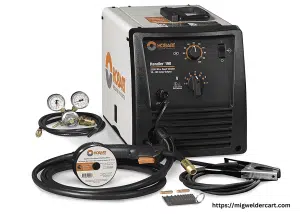
Hobart, in business since 1917, is our top pick for the finest MIG welder. In addition to working well with common metals, this type can join aluminum and stainless steel. A single pass can weld steel with a thickness of 24 gauge up to 5/16 inch.
The input voltage is 230V, the frequency is 60Hz, the amperage range is 25–190 amps, and the duty cycle is 30% at 130 amps.
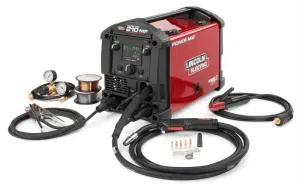
Lincoln Electric predates Hobart by a few years, having been founded in 1895.
This welder weighs just 40 pounds, is portable since it can accept input from both 120 and 230 volts, and has dual voltage inputs. Mild or stainless steel up to 5/16 in., or aluminum up to 3/16 in., may be welded using a MIG welder.
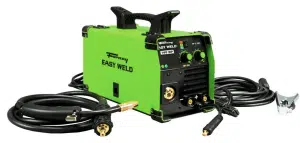
Lincoln Electric predates Hobart by a few years, having been founded in 1895.
This welder weighs just 40 pounds, is portable since it can accept input from both 120 and 230 volts, and has dual voltage inputs. Mild or stainless steel up to 5/16 in., or aluminum up to 3/16 in., may be welded using a MIG welder.
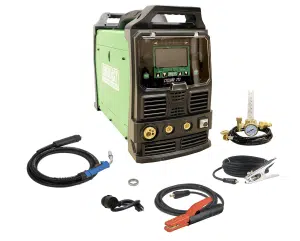
Dual voltage (110v/220v) allows for the Everlast Cyclone welder’s 230A MIG and 160A Stick outputs. Welding wire spools of either 4 inches (2 lb) or 8 inches (10-12 lb) in diameter may be used. Spool guns and MIG guns with Polymer Liners and U-groove Drive Rolls are also viable options for welding aluminum.
A 4.3″ TFT Digital Color Display and a weld interrupt with overcurrent and duty cycle warning messages are also included.
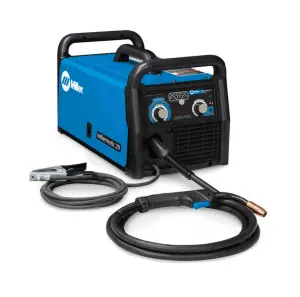
This welder can handle metals as thick as 18 gauge up to 3/8 inch (Al), 24 gauge up to 3/8 inch (Mild Steel), and 20 meters up to 1/4 inch (Stainless Steel) Hz.
An angled cast-aluminum drive system, thermal overdrive prevention, automatic spool gun detection, and more are also included.
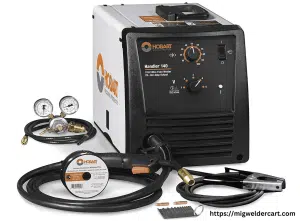
Again, we see high-quality specifications from Hobart. Welding thicknesses of 24 gauge up to 1/4 in mild steel are now possible thanks to the unit’s 5-setting voltage control selector. Steel, stainless steel, and aluminum may be welded using the 115V average home currently.
Weighting in at 57 pounds, this item has motor protection that resets itself in the event of an error.
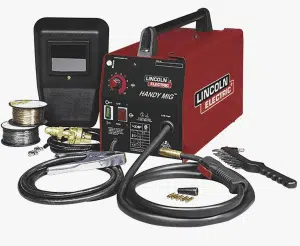
The second MIG welder by Lincoln on this list is a more reasonably priced variant of the first model. It can weld mild steel up to 1/8 inch thick and has a welding current range of 35-88 amps. Using a 115V, 20-ampere home outlet, it can do MIG (shielding gas available separately) and flux-cored welding.
This device can feed wire at a rate of 0-300 inches per minute and weighs 46 pounds.
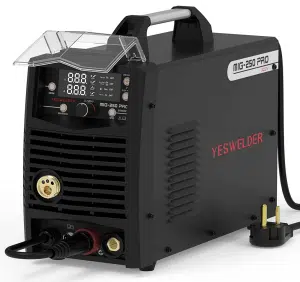
This welder utilizes IGBT inverter technology and can do three different types of welding simultaneously.
The MIG and MMA outputs are 30 and 250 amperes, respectively, while the 10 amp output is suitable for MIG (TIG) use. It has a duty cycle of 60% at 250A and 100% at 193A, and it can handle rolls of wire weighing up to 2 and 10 pounds.
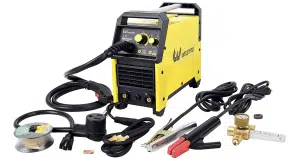
This machine may be used with either 110 or 115 volts, and when powered by 220 volts, it can weld mild steel up to 1/4 inch thick utilizing MIG, flux-cored, or stick welding techniques. It has endlessly variable wire speed and heat settings and can feed wires from 78 to 396 inches per minute.
This welder has a tiny IGBT inverter architecture, weighs just 21.2 pounds, and has a three-year guarantee.
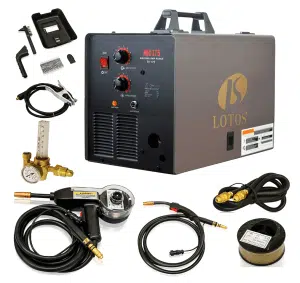
This machine can weld 18 Gauge – 1/4″ mild/stainless steel and 3/16″ or thinner aluminum. Its rated output is 175 amps. It can handle 4″ or 6″ wire spools and has resettable overload protection, making it suitable for industrial use.
In addition to a 30-day money-back guarantee and a 3-year limited warranty, the firm also offers a 1-year new replacement warranty and a support staff headquartered in the United States.
When considering purchasing a MIG welder, you must carefully consider several different criteria. The reason is you never know what kinds of materials you’ll be welding together. But, on the other hand, you can decide you want to focus on only one metal, so you’ll need to get the finest MIG welders for that specific metal.
Here are a few things to keep in mind when you shop:

M Hasan
I’m a professional welder and a writer at heart, so I wanted to share the welding expertise I’ve gathered over the years. In addition, I hope our posts motivate others to start welding. I have well-researched. I promise you’ll find honest advice on choosing the best MIG welder here- www.migweldercart.com
Check Out My Reviews On The 10 Best Mig Welder.
Disclaimer:
Our website, www.migweldercart.com, participates in the Amazon Services LLC Associates Program. As an Amazon Associate, we collect commissions on qualifying purchases, but our readers have no difference in price. Our website’s products, brands, trademarks, and pictures belong to their respective owners.